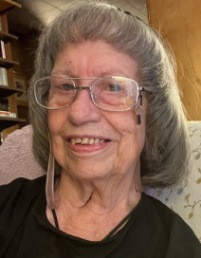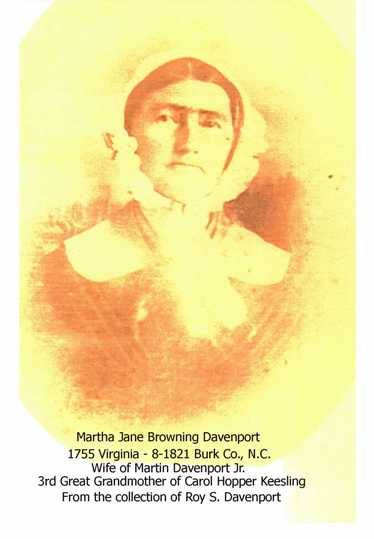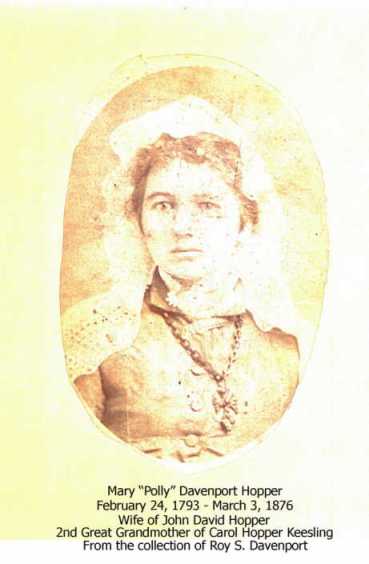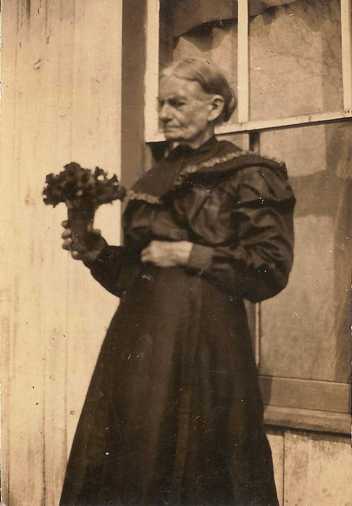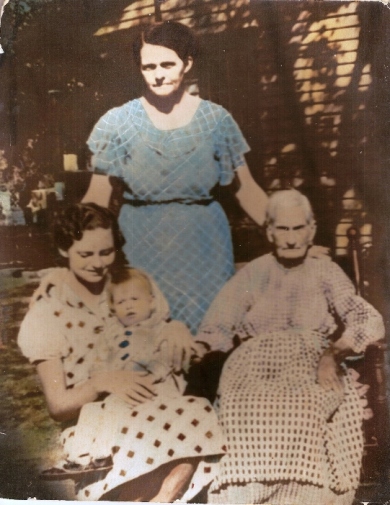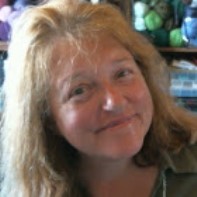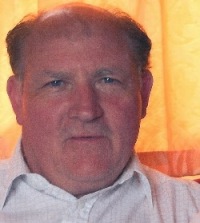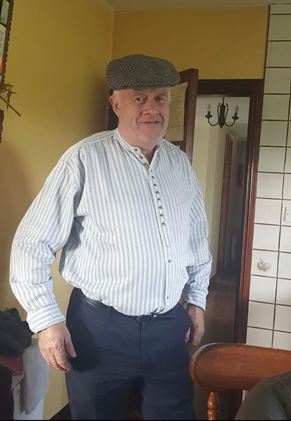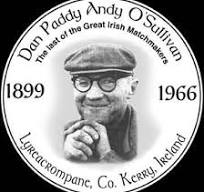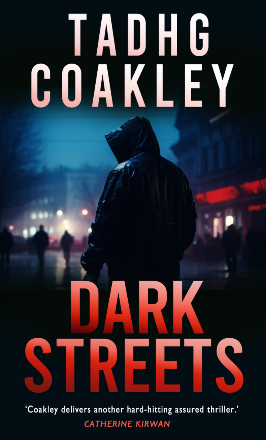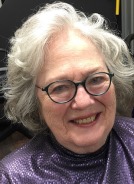
By
Melinda Cohenour
Malinda Ellen Hopper Bullard – or
Linnie Bullard, the Songbird of the Ozarks
This column is devoted to the story of my namesake, Malinda
Ellen Hopper Bullard, a remarkable woman whose years on this earth were
chronicled, in part, by the United States Census where her existence was
documented from the year 1850 (when she was just a five-year-old girl)
to the year 1930 (the last Census taken before her death in 1937) a
total of NINE Census enumerations. Unfortunately, as all seasoned
genealogists are aware, the 1890 US Census records were damaged in a
fire, but destroyed by the water damage caused in attempts to salvage
those very records.
Malinda Ellen Hopper was born 21 December 1845, almost
exactly one hundred years before the birth of the child who would be
granted use of her name – her great-granddaughter, the author, who was
born 6 January 1946. My mother was blessed to have the opportunity of
knowing her grandparents on both sides: Malinda Ellen Hopper Bullard and
William Henry Bullard, maternal, and Sarah Jane Godwin Joslin and
William Henry Joslin, paternal.
My inspiration for chronicling the life and times of Malinda Hopper Bullard was the chance viewing of a movie, Songcatcher,
released in 2000 but not viewed by your author until last night. The
parallels of the story line of the movie and the life and times of my
great grandmother were amazing and the inclusion of two of her folksong
ballads, Pretty Saro, moved me to tears. My night was a restless one,
seeking out the soundtrack of the movie, listening endlessly to the
songs of the mountains, then dreaming of the bits and pieces known about
the remarkable woman, Malinda Ellen Hopper Bullard. Rosanne Cash
performs another of her ballads, Fair and Tender Ladies.
Malinda was the second child and second daughter of John
David Hopper, Jr. (b. 27 Jul 1823, Hamilton County, Tennessee; d. 19 Jul
1895, Jane, McDonald County, Missouri) and his wife, Mary Johnson Young
(b. 11 Apr 1821, Lafayette County, Missouri, d. 22 Jun 1896, Jane,
McDonald County, Missouri). Her mother, Mary Johnson Young was the
daughter of John Young (b. 1792, Burke County, North Carolina, d. 1850,
McDonald County, Missouri) and Sarah “Sally” Hopper (b. 1796, Burke
County, North Carolina, d. 1854, Lafayette County, Missouri) who was the
sister to Napa Charlie Hopper who led the Bartleson-Bidwell party in
1842 from Missouri to California, an historic journey memorialized in
several State’s history books.
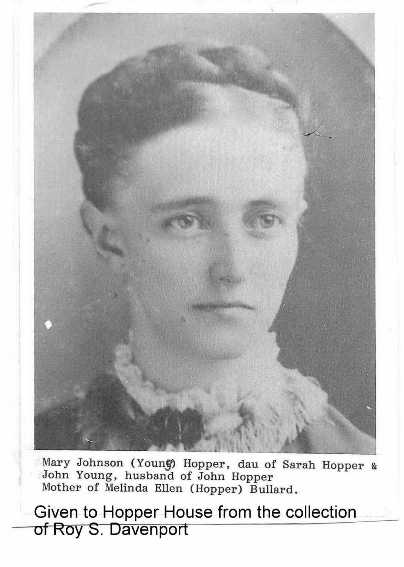
|
|
Malinda’s grandmother, Mary “Polly” Davenport Hopper (b.
24 Feb 1793, Chattanooga, Tennessee d. 3 Mar 1876, Brushy Knob, Johnson
County, Missouri) was the daughter of Capt. Martin Thomas Davenport, Jr.
one of the Heroes of King’s Mountain and the subject of one of the
author’s in-depth research studies provided in an earlier column. Mary
“Polly” was Martin’s daughter by his second wife, Martha Jane Browning
(b. 1755 in Virginia, d. 1821, presumably in North Carolina).
Mary “Polly” Davenport was a strong influence on Malinda
Hopper Bullard. She was a midwife of great esteem and a courageous
woman. From another family historian’s book, the following story was
told about her:
“Ida Hopper Cox has this to say about her G-Grandmother,
Mary Davenport. “My G-Grandmother was a mid-wife and used to ride all
over the country on horseback and attend to the sick. We often heard my
mother tell of her starting to confine some woman and an awful
snowstorm came up and she lost her way. They expected to find her
frozen to death. She had taken off the saddle and blankets and laid down
and covered up with them the best she could, and the poor horse stood
over her all night and blew his breath on her feet…she came through
unharmed.”
SOURCE: Source
This story was also related to our Aunt, Linnie Jane Joslin Burks, who
had included the story in her handwritten family tree records.
Like her grandmother before her, Malinda Ellen Hopper
Bullard would become an herbalist, Ozark midwife, and provide medicinal
care to friends, family, and neighbors.
Malinda lived a hard and demanding life. In her early
teens, the conflicts preceding the Civil War would disrupt her life.
Her father was a member of the Mormon Church of Jesus Christ of Latter
Day Saints and, therefore, a conscientious objector. At that time, no
man was granted that right. Soldiers for either side upon finding an
able man not committed to one side of the conflict or the other
considered him a traitor and rendered judgment immediately. The only
punishment for treason was death. Thus, John David Hopper, Jr., spent a
good portion of his time in hiding in a cave near the family farm. That
left the job of running the farm to Malinda. The family legend is told
that early in the conflict a group of Union sympathizers or soldiers
arrived at the farm. Such a visit was typically prompted by need of
food, water, shelter or even care for their horses. On this occasion,
the young officer in charge of the small group “took a shine” to young
Malinda who was reputed to be not yet 15 years of age. After having
their demands acquiesced, the Lieutenant ordered his men to “burn it.”
Alarmed, Malinda pled with the Lieutenant not to destroy their farm, her
mother and young siblings and all their livelihood. “Well, let’s see…a
pretty young thing like you, begging for this favor, must be willing to
give a favor in return, right?” With that, Malinda responded, “I’ll give
ye not more than a Yankee dime, as that’s what’s said you barter in.”
The Lieutenant, rather than be angered found her retort to be charmingly
naïve. He said, “Well, if that’s what you have to offer, guess we just
may have struck a bargain.” With that, Malinda put a boot toe into his
stirrups, pulled herself up and planted a kiss upon his cheek. The
soldiers were ordered to pass the farm by – and to pass the word on that
it should not be harmed in future visits.
The Census for 1860 shows the family in Pineville,
McDonald County, Missouri, but the 1870 Census enumerates the family in
nearby Jane, McDonald County, Missouri. The entire area of McDonald
County at that time was filled with Hopper, Young, Russell, Davenport,
Coffee and Bullard families. In 1880, Malinda Ellen, now age 34 was
found yet to be faithfully caring for her aged parents on the family
farm in Jane.
Malinda grew up in a community largely populated by
relatives. Two of her best friends were Susan Caudill, about two years
younger, and her just older cousin, Eliza Coffee (Pitts) whose parents
were her aunt and uncle, Elizabeth “Betsy” Hopper (elder sister to her
father) and Meredith Coffee. Just after the War, the family legend is
that one day the three friends were coming back from market when they
saw a handsome young man with rich auburn hair and a lush auburn beard
came riding by on a fine horse whose color closely matched his hair and
beard. His saddle was not the ordinary “every day” saddle, but a very
fancy one of leather adorned with brass fittings. The three girls each
said, almost as one, “Oh, my! I think I must marry that very man one
day!” And, as luck would have it – all three would, indeed, be wed to
William Henry Bullard, Confederate hero of the Civil War.
First, Susan D. Caudill, the youngest of the trio would
be married to William Henry, and come to bear three sons: Jacob
Alexander Bullard who would survive a mere 13 years, James Russell
Bullard who would succumb as an infant, and Thomas Jeremiah Bullard who
would survive to adulthood. Only two years following that third birth,
Susan Caudill Bullard passed away. It is believed she did not survive a
fourth pregnancy, but records have not been located to prove that to be
true.
After the death of his first wife, William Henry Bullard
would take his second wife, this time wedding the recently widowed Eliza
Coffee (Pitts) in 1875. By May of 1880, this second wife would die,
leaving William Henry a second time widower. In June the US Census would
record William Henry Bullard and his young son, Thomas just 9 years
old, living in White Rock, McDonald County, Missouri. By October of
1880, William Henry Bullard and Malinda Ellen Hopper would be wed,
“sitting horseback in front of Parson Scogg’s cabin.” Malinda and
William Henry Bullard would have seven children of their own: Stella Lee
Anice “Stell” Bullard, Vincil Clarence “Vince” Bullard, Lilvia Acenith
“Lil” Bullard, Azalia Lovethia “Zail” Bullard, Mary Ester Zenobia “Nobe”
Bullard, Evan Ones Bullard and Carrie Edyth Bullard.
When Carrie married James Arthur Joslin it raised
eyebrows around town. For Carrie had remained home to care for her aging
parents much as her mother before her. And James Arthur Joslin was,
perhaps, THE most eligible bachelor in town, dapper, tall, handsome,
charming, and several years her elder. But, that was not the biggest
reason for the townfolk’s interest in this prospective union but the
history of the two fathers: William Henry Bullard, Confederate veteran,
Democrat, Methodist and William Henry Joslin, Union veteran, Republican,
Baptist. In spite of this, the wedding proceeded, but it was always
said a family reunion was more like a reenactment of the Big War!
Malinda Ellen was widowed in 1911. By 1920, the US Census
would find her heading the household that included son Evan (who never
married) her daughter Carrie and her little family, husband Artie and
new baby daughter, Lena May.
Malinda Ellen in mourning attire – circa 1911
The household was filled with music, as always had been true.
The families of Hoppers, Russells, Youngs, Davenports and even the
Bullards came from the mountains of North Carolina, Virginia and
Tennessee – the Appalachian Mountains. And those mountains were filled
with immigrants from Ireland, Scotland, Wales and England. The music of
the Appalachian Mountain range is renowned as the origins of Bluegrass.
Plaintive songs of life: struggles, unrequited love, and loss, war and
conflict, and the inevitability of death. Those songs were carried down
in the family by oral tradition, each generation learning the tunes and
the lyrics of age-old ballads. And Malinda, known to all as “Linnie”,
was born to follow in the footsteps of her grandmother and her mother
before her – midwife, herbalist, medicine woman and bard. Her fame was
widespread as one who knew more of the old tunes and lyrics than any
other around.
Thus, it was, that Vance Randolph would seek her out in
1926 to document what he believed to be a vanishing treasure – the
folksongs of the Old Country, carried to the Appalachians and now
beyond. Ironically, it is now believed the mountains of the Ozark are
merely a continuation of that largest and most extensive of all American
mountain ranges, beginning in the far North in New York state, to
Alabama, and extending to what is now believed by some geologists to be a
continuation on the Ozark Plateau. An extract from Appalachia and the
Ozarks reads as follows:
The
Appalachian Uplands, stretching from New York to Alabama, and the area
of the Ozark-Ouachita mountains are separated by some 400 kilometers of
land. They are actually two parts of a single physiographic province
that have a strong topographic similarity and an unusually close
association between topography and human settlement.
Early settlers, when they reached the shores of colonial America,
heard tales of a vast range of high mountains to the west. As they moved
into those mountains, they discovered that their elevation had been
exaggerated. Only in a few small areas do the Appalachians or Ozarks
approach the dramatic vistas so common in the West.
Nevertheless, most who concern themselves with such questions
would agree that much of the Appalachian and Ozark topography should be
called mountainous. Local relief is greater than 500 meters in many
areas, and it is sometimes greater than 1,000 meters. Slopes are often
steep.
The human geography of Appalachia remains closely intertwined
with its topography. Without the mountains, the area would merely be a
part of several adjoining areas, such as the Deep South. With them,
Appalachia and the Ozarks exist as a distinctive and identifiable
American region. Source
“Vance Randolph was a folklorist and professional writer” begins the biography of this extraordinary man SOURCE
His story alone is remarkable. He fell in love with the unique quality
of life in the Ozarks, the incredibly beautiful landscape, and the
equally unique people who had settled the area. To quote from the bio
again: ‘He had first visited nearby Noel, Missouri, in 1899 as a boy
while on vacation with his parents. It was then at the age of seven
that he came to believe ‘the Ozark country was the garden spot of all
creation.” It was the beginning of Randolph’s life-long love affair with
the Ozarks of southwest Missouri and northwest Arkansas.’
He moved to Pineville, Missouri, in 1919 and in the
course of his research and documentation of the Ozarks and the way of
life, learned of Mrs. Linnie Bullard, bard extraordinaire. He began
visiting Linnie on her front porch and soon obtained her agreement to
let him capture her ballads and folksongs on the wax cylinders he had
created for this purpose.
And, here, if you have seen Songcatcher you will
recognize the incredible parallels between that movie, the musicologist
heroine, Dr. Lily Penleric and our Linnie Bullard and her own
musicologist, Vance Randolph. In the film, Dr. Lily visits her sister in
the Appalachian Mountains and ends up falling in love with the land,
the people and, most importantly, the MUSIC. She visits various people
who are known to “have the music” and documents their songs by
handwriting the notes and lyrics but also on a machine she creates, thus
the title Songcatcher.
Over the course of time, Vance Randolph would record
Linnie Bullard’s version of many Old Country folk songs and ballads:
The following is a list of songs recorded by Vance Randolph on handmade
wax recording cylinders in 1926 by my great-grandmother, Malinda Ellen
Hopper Bullard identified by the name by which she was normally called
Mrs. Linnie Bullard. These recordings now reside in the Library of
Congress. The index created originally by the University of Missouri and
included by Jane Keefer in her Index.]
Bullard, Linnie - Appearance as principal performer:
-
1. Banks of the Nile - I (Men's Clothes I Will Put On), Ozark Folksongs.
Volume I, British Ballads and Songs, Univ. of Missouri, Bk (1980/1946),
p216/# 42A [1926]
- 2. Becky at the Loom, Ozark Folksongs. Volume IV, Religious
Songs and Other Items, Univ. of Missouri, Bk (1980/1946), p123/#677
[1926]
- 3. Brown Girl and Fair Ellen/Eleanor (Brown Girl IV), Ozark
Folksongs. Volume I, British Ballads and Songs, Univ. of Missouri, Bk
(1980/1946), p 97/# 15C [1927]
- 4. Come All Ye Fair and Tender Ladies/Maidens (You Fair and
Pretty Ladies), Ozark Folksongs. Volume I, British Ballads and Songs,
Univ. of Missouri, Bk
- 5. Green Bed/Beds (Johnny the Sailor), Ozark Folksongs. Volume
I, British Ballads and Songs, Univ. of Missouri, Bk (1980/1946), p251/#
53B [1926]
- 6. Homespun Dress, Ozark Folksongs. Volume II, Songs of the South and West, Univ. of Missouri, Bk (1980/1946), p263/#215 [1928]
- 7. Hunters of Kentucky (Hunter from Kentucky), Ozark Folksongs.
Volume IV, Religious Songs and Other Items, Univ. of Missouri, Bk
(1980/1946), p104/#666 [1926]
- 8. Lonesome Grove (Lonesome Dove - I), Ozark Folksongs. Volume
IV, Religious Songs and Other Items, Univ. of Missouri, Bk (1980/1946), p
39/#607 [1926]
- 9. Lord Lovel/Lovelle/Loven/Lover, Ozark Folksongs. Volume I,
British Ballads and Songs, Univ. of Missouri, Bk (1980/1946), p115/# 17B
[1925]
- 10. Mary Hamilton (Four Marys/Maries), Ozark Folksongs. Volume
I, British Ballads and Songs, Univ. of Missouri, Bk (1980/1946), p151/#
26 [1926]
- 11. Ocean Is Wide, Ozark Folksongs. Volume III, Humorous &
Play-Party Songs, Univ. of Missouri, Bk (1980/1946), p390/#580 [1926]
- 12. Pretty Saro, Ozark Folksongs. Volume IV, Religious Songs
and Other Items, Univ. of Missouri, Bk (1980/1946), p222/#744A [1926]
- 13. Southern Encampment, Ozark Folksongs. Volume II, Songs of
the South and West, Univ. of Missouri, Bk (1980/1946), P275/#223 [1926]
SOURCE
For my children, grandchildren and great-grandchildren, I urge you to listen to the soundtrack from this movie, Songcatcher,
which includes a version of Pretty Saro by Iris Dement that is what I
believe to be closest to the song my grandmother Carrie Bullard Joslin
sang to me. Grandmother Carrie never believed she had the voice that
her mother was blessed with, but strove to keep alive the oral tradition
of this historic music. ‘Pretty Saro” has been recorded by Bob Dylan,
by Doc Watson, by Judy Collins and many, many more. The current best
link to hear it is a rendition on YouTube by Iris DeMent singing Pretty Saro from Songcatcher Here is the link: Pretty Saro on YouTube ris DeMent singing Pretty Saro from Songcatcher/B>
I
youtube.com
Notable artists who have recorded Pretty Saro include: (Artist and Album)
Derroll Adams – 65th Birthday Concert
Sam Amidon – All is Well
Judy Collins – A Maid of Constant Sorrow
Shirley Collins and Davy Graham – Folk Roots, New Routes
Iris Dement – Songcatcher
Jay Munly – Galvanized Yankee
Bob Dylan – The Bootleg Series Vol 10 – Another Self Portrait (1969-1971)
Pete Seeger – God Bless the Grass
Doc Watson – Home Again
Chris Jones – Cloud of Dust
Ashley Monroe featuring Aubrey Haynie – Divided & United: The Songs of the Civil War
“During his Self Portrait sessions in March 1970 at Columbia
Records' New York studio, Bob Dylan ran through "Pretty Saro" six
consecutive times. While none of those versions made the final cut for
the album, the song remained in Columbia's vault, until it was released
on Another Self Portrait, a 35-track box set of songs cut for Nashville
Skyline, Self Portrait and New Morning.”
SOURCE:This is an excellent link for it provides links to the artist’s actual music.
To add just one more bit to the mystique that
seemed to surround Malinda Ellen Hopper Bullard, several years ago while
researching the Bullard family, I found among thousands of entries one
intriguing hit on the search engine. A lady named Marilyn Carnell
living in California had obtained, by chance, a series of letters among
members of the Bullard family written in the Civil War era. She did not
want those letters to be lost so had posted online. I responded to her
post and after a series of emails she determined I had sufficient
documentation to be entrusted with the letters. She mailed a package to
me of the original letters and I was, ultimately, able to identify the
writers and recipients of each letter. During the course of our email
correspondence, I was amazed to learn that Marilyn Carnell had a link to
Pineville. In fact, when my great-grandmother Malinda Ellen Hopper
Bullard passed away, the undertaker who crossed the swinging bridge to
the island home where she had lived was Lee Carnell – Marilyn Carnell’s
great-grandfather!
Our great grandmother lived long enough to see the
birth of my eldest sister, the Editor of PencilStubs.Online. There is a
wonderful four-generation photograph of Malinda Ellen, her daughter
Carrie, her granddaughter Lena May and her great-granddaughter, Mary
Elizabeth Carroll. (See pic below)
On the 4th of February in 1937, Malinda Ellen
Hopper Bullard watched her last sunrise, looking out the window of her
room across the wide river from the island home she shared with her
daughter, Carrie. She was buried beside her husband in the Pineville
Cemetery, Pineville, Missouri, among the graves of so many family
members.
Compiled and Researched by Melinda Ellen (Carroll) Cohenour
Click on author's byline for bio and list of other works published by Pencil Stubs Online.
